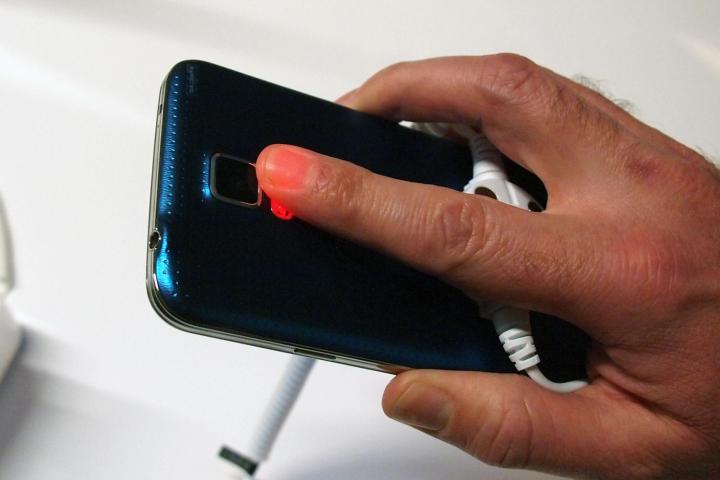
Shortly after Samsung announced the Galaxy S5, the Ministry of Food and Drug Safety in South Korea decided it would take a close look at the phone’s wealth of fitness, health and lifestyle features. Depending on the findings, the Galaxy S5 was at risk of being reclassified as a “medical device,” and Samsung would be forced to submit it for approval. This may have resulted in the phone’s launch being delayed.
Apparently, Samsung had already held talks with the Ministry during the phone’s development, but has been made to wait until now for the decision. The good news is, the Ministry has decided the Galaxy S5 doesn’t meet the requirements, and therefore won’t be locally categorized as a “healthcare instrument.”
It’s Samsung’s inclusion of a heart rate sensor on the Galaxy S5 which caused the problem. Under existing Korean rules, products which can test or monitor organ functions are subject to medical device regulations. While this ruling is specific to South Korea, it’s also important for the phone’s international release. It’s one less obstacle for Samsung to overcome in order to meet the April 11 launch date.
The Galaxy S5’s release, along with other similar products such as LG’s HRM Earphones, which monitors heart rate through the wearer’s ears, and Samsung’s own Gear Fit, could result in a change in Korean law. The alteration will see this type of device reclassified as one used solely for fitness and not medical purposes.
So far, any similar issues with the Galaxy S5’s functionality haven’t risen in the U.S. or Europe, but may have done if the Korean Ministry’s decision had gone the other way. Several manufacturers are expected to include health and fitness-centric features on new products this year – Apple’s iWatch being one notable rumored example – and this will smooth the way for their eventual release.
Editors' Recommendations
- 5 phones you should buy instead of the Samsung Galaxy S24 Plus
- 5 phones you should buy instead of the Samsung Galaxy S24 Ultra
- Here’s how fast 5G on your Samsung Galaxy S23 really is
- Samsung Galaxy Note 10 Plus 5G vs. Galaxy S10 5G
- I hope the iPhone 13 has a fingerprint sensor as good as the Galaxy S21’s



